Land of 500 Projects
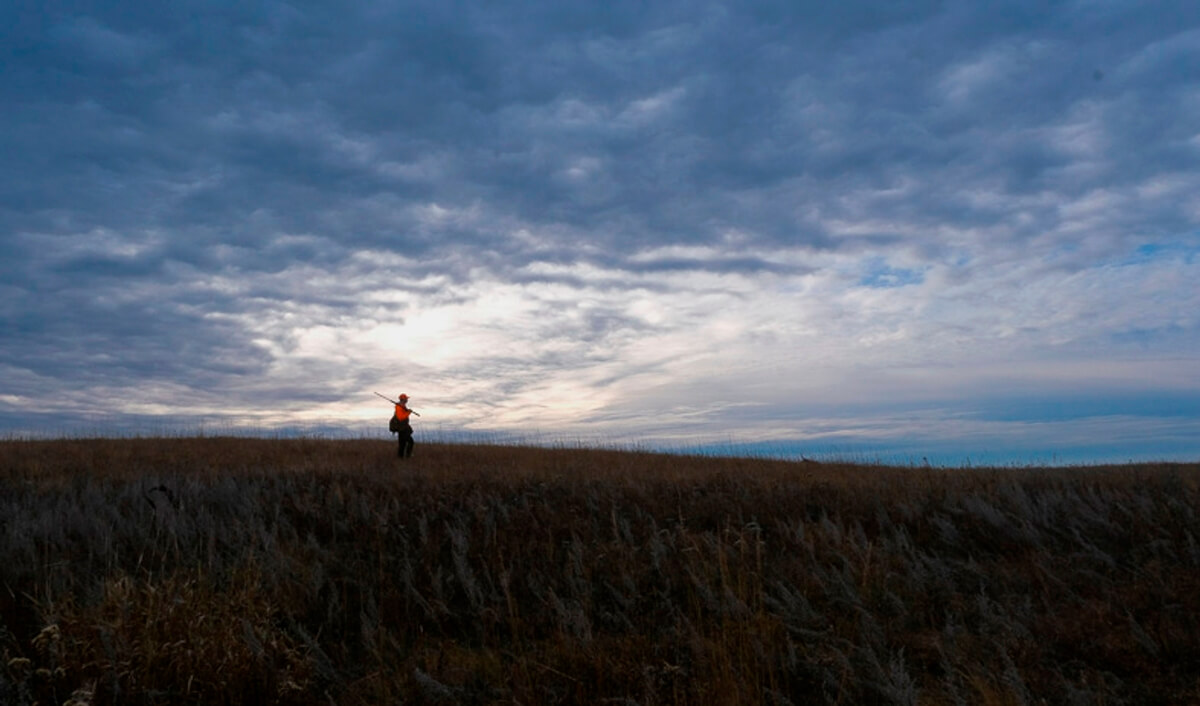
Minnesota Regional Representative Chance Steward walks a parcel of new publicly accessible land in Lyon county in the fall of 2023. (Photo by Dave Schwarz)
Conservation legacy reaches milestone in Minnesota
State’s Land and Legacy Amendment, partner support drive public land acquisition and restoration work in Pheasants Forever’s home state
The last three months of 2023 were a whirlwind for Minnesota Coordinator Sabin Adams.
With dozens of projects moving through the acquisitions process at their own speed, the details for 18 came together just in the last quarter of the year. That put Minnesota Pheasants Forever on pace to hit a major milestone in January - 500 public lands acquisitions completed.
“It’s huge,” Adams said. “It shows the dedication of everyone involved, from supporters to landowners to partners and finally to the professionals on our staff. There is so much hard work that no one ever sees that goes into these projects, to hit a number like this is amazing.”
Since its founding in St. Paul in 1982, Pheasants Forever has acquired and restored more than 70,000 acres of public land in Minnesota, an area nearly equal to the city limits of Minneapolis and St. Paul combined. Acquisitions in 2023 represent 2,592 additional acres of publicly accessible upland habitat in the state. For the fiscal year running July 1, 2023, to June 30, 2024, a record breaking 5,000 acres is projected to be added.
“The way I would describe 2023 is that it went out with a bang,” Adams said. “We were on a fairly slow roll for acquisitions at the beginning of 2023 then it caught fire at the end of the year, and that fire just kept burning through the start of 2024.”
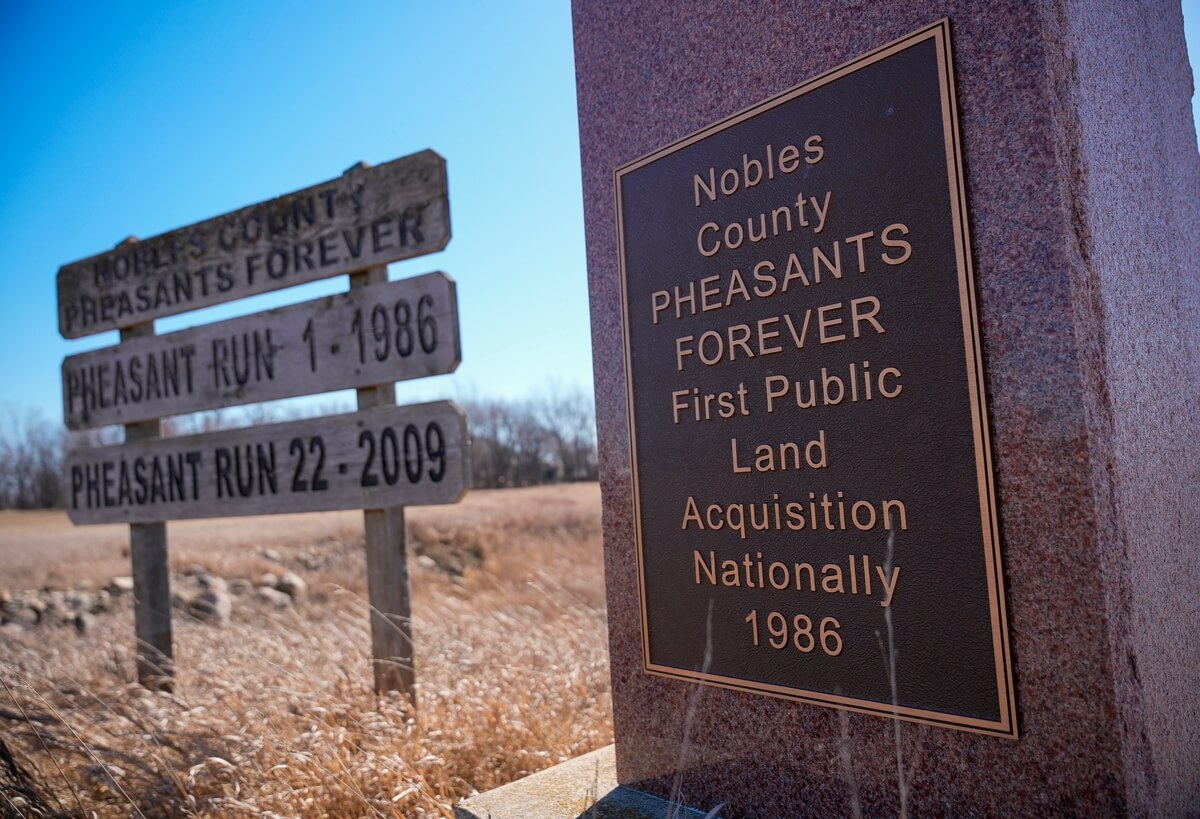
A monument stands at the site of Pheasants Forever's first public lands project in Nobles County. (Photo by Dave Schwarz)
The beginning
In the early years of Pheasants Forever several chapters worked with landowners to fund habitat projects on private lands. In Kandiyohi County, home of chapter number two, funds were raised for the first Pheasants Forever project in the nation: a woody-cover shelter belt created in 1983 that is still in existence today.
The public lands part of the journey started in Nobles County, home to the organization’s 14th chapter.
In 1985 committee members toured a 40 acre parcel tucked into the gently rolling hills a few miles south of Worthington. A year later, Pheasant Run One was born.
Bruce Amundson was chapter president at the time, a post he held for 18 years. “We had really successful early banquets and had done some good projects on private land, but we felt there was a real opportunity to buy something and make it public, a place that everyone could go out and experience for themselves,” Amundson said.
“We took some criticism right away. People said ‘you’re just buying this little postage stamp and turning it into a predator sink,’” longtime Pheasants Forever executive and supporter Joe Duggan said. “What really happened is it became a beachhead, an article of hope that we really can make a difference. It was a rallying cry that went far beyond Worthington. Other chapters took note and things started happening quickly all over.”
Today, you can walk more than 12 miles in the Pheasant Run One area and never leave public land. The Nobles County chapter plans to celebrate Pheasant Run numbers 45 and 46 this year.
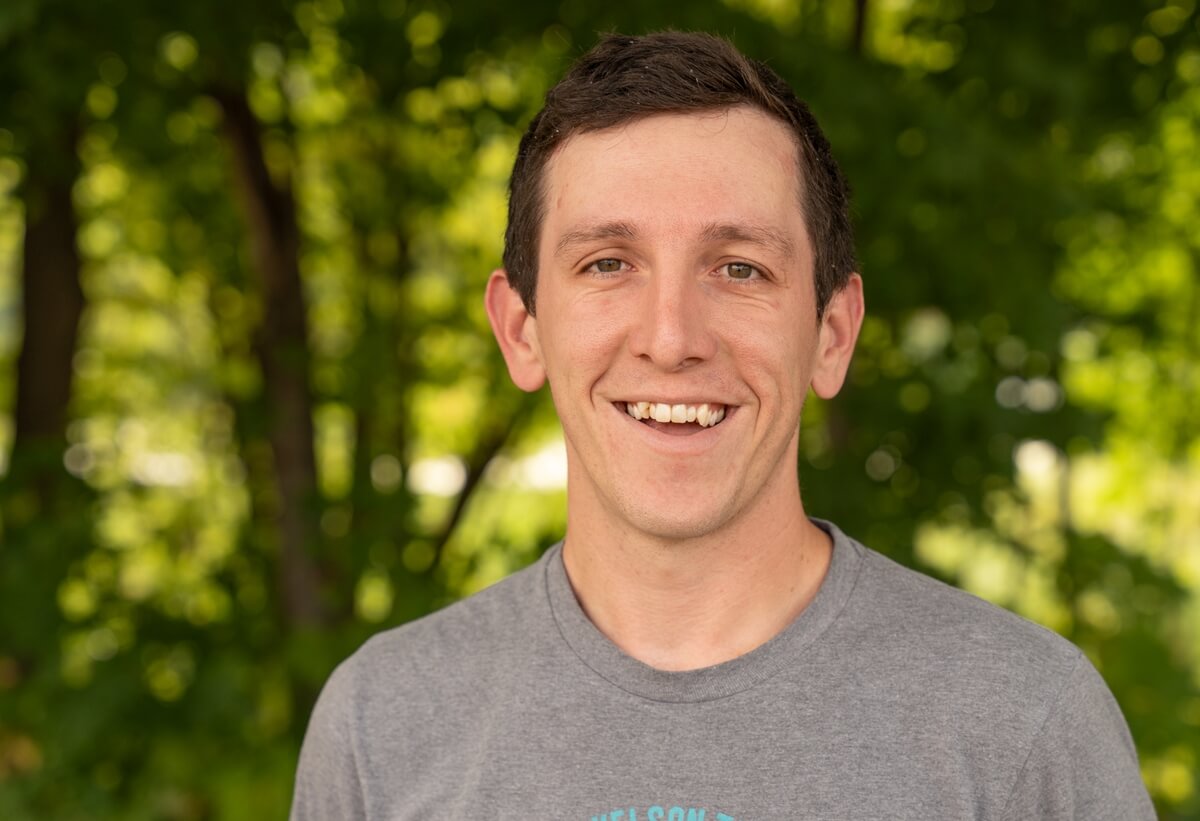
Minnesota State Coordinator Sabin Adams
A prairie mosaic
Adams points to the success of several similar large public land complexes developed over time in Minnesota. These expansive areas provide habitat for many species in addition to pheasants.
“You can look at a map of where threatened and endangered prairie species are seen and it overlays almost exactly with a map of large grassland complexes,” Adams said.
These areas are stitched together through a plethora of partnerships both public and private. An example is the recent addition to Rush Wildlife Management Area (WMA) near Mahnomen.
Springboarded by a $25,000 donation from the Minnesota Ornithological Society, Pheasants Forever and The Minnesota Prairie Chicken Society joined forces to acquire even more funding for a 95-acre parcel that adjoins an existing 700-acre WMA. The addition was conveyed to the DNR in January 2023.
Pheasants Forever and the Minnesota Prairie Chicken society have been partnering on acquisition projects for more than 11 years. A threatened gamebird species native to North America, greater prairie chickens require large open areas to thrive, ideally more than 3,000 acres.
“Over time we can build a complex of grasslands in an area that really has an impact. We can grow the population of threatened species like prairie chickens by giving them more and more grass and keeping them there,” Adams said. “It’s not often that you do something that changes the game overnight or in a year, but if you look at what we’ve done over many years that absolutely makes an impact.”
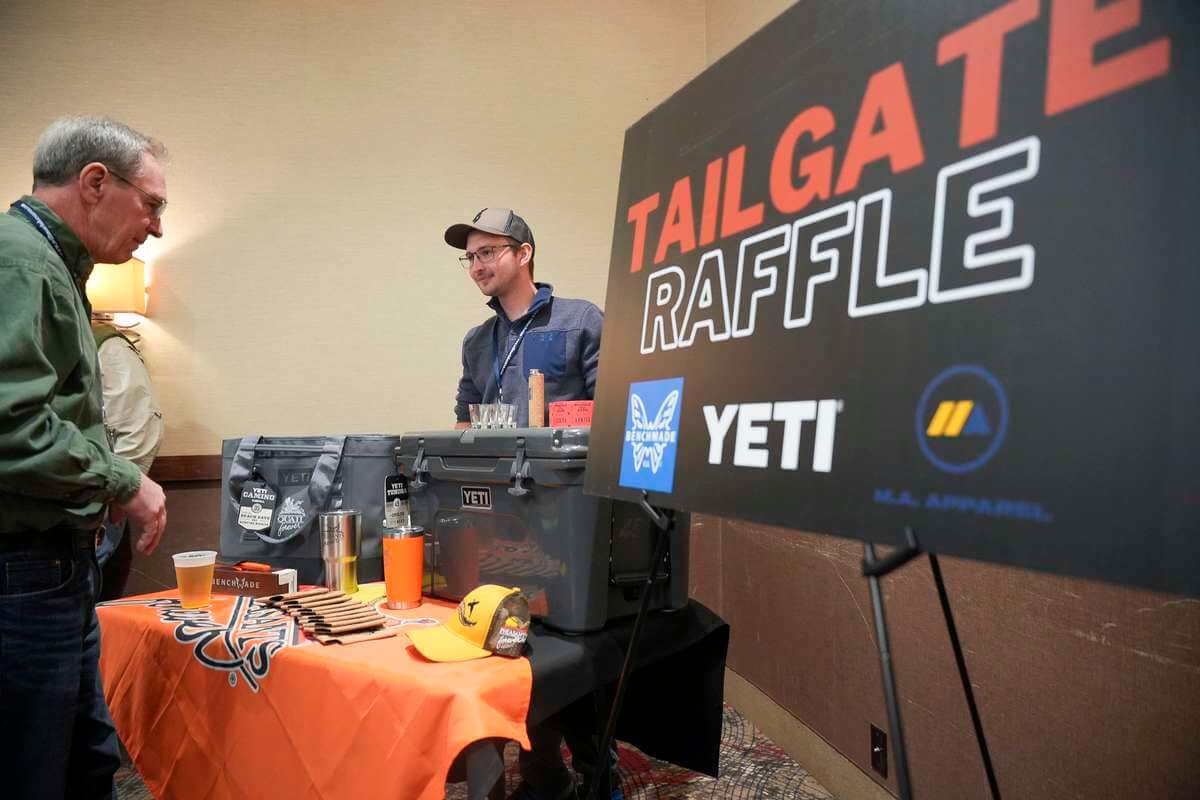
Farm Bill Biologist Joe Quehl talks with a volunteer while selling tickets at the state convention in January, 2024. (Photo by Dave Schwarz)
The Spark
All land acquisitions start at the grassroots level. “While these projects are funded largely through grants and partnerships, without that first dollar raised by volunteers with the support by the local community none of this happens,” said Eran Sandqiust, Midwest Region Director of Conservation Delivery and former Minnesota coordinator.
“That’s where it all begins. Those initial funds cover project match, personnel and other indirect costs. They let us prove that the project has public backing and when we go to a partner they know that we can meet our commitments.”
Those early private dollars are multiplied through a variety of grants, matches and other funding sources, currently by a nearly 40-1 ratio in Minnesota.
The process behind that growth is wrapped in the organization’s Build A Wildlife Area (BAWA) program. The program has permanently created more than 225,000 acres of publicly accessible habitat in 16 states.
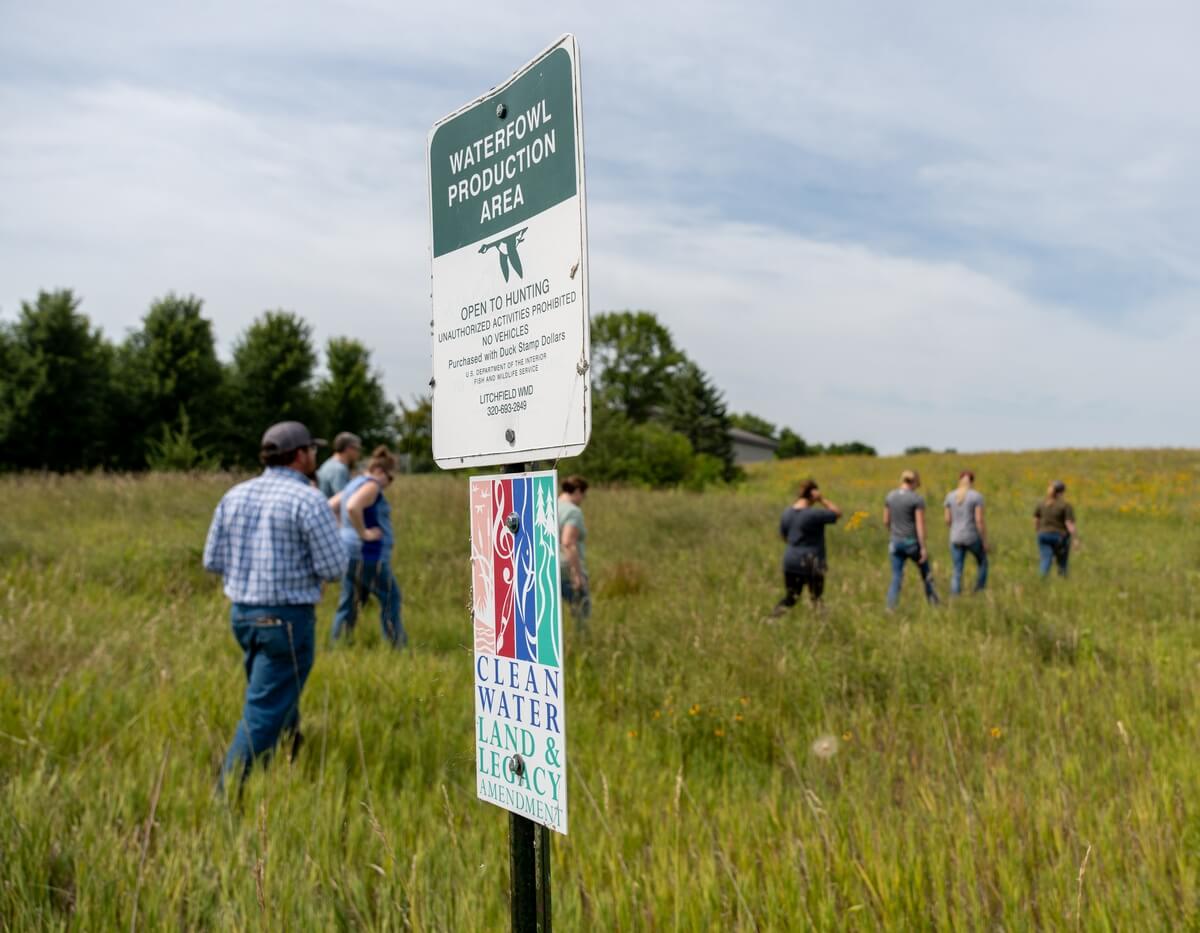
Biologists walk past a Land and Legacy Ammendment sign during an event in Kandiyohi County in 2023. (Photo by Dave Schwarz)
Land, Legacy
In Minnesota, conservation professionals say one of the largest boosters for public land acquisitions has been the Clean Water, Land and Legacy Amendment.
Approved by voters in 2008, The amendment increased the state’s sales tax by 3/8ths of one percent. One third of those funds go into the Outdoor Heritage Fund (OHF), the primary driver of acquisitions. Those funds “may be spent only to restore, protect and enhance wetlands, prairies, forests and habitat for fish, game and wildlife.” Areas acquired through the OHF must be open for public hunting and fishing.
More than 1.6 million Minnesotans supported the amendment; it received the majority of votes in every congressional district in the state. Since 2008, The Lessard-Sams Outdoor Heritage Council which administers the OHF, has funded public lands projects in every Minnesota county. More than 600,000 acres of grasslands and 61,000 acres of wetlands have been restored.
“We really need to give credit to the voters of Minnesota. In tough times they chose to impose part of the state sales tax on themselves. It speaks to the value Minnesotans place on wildlife habitat and clean water. The job now is to execute the vision that voters had and make sure they know the money is doing exactly what they intended,” Sandquist said.
Funding acquired through the OHF is often further leveraged through North American Wetland Conservation Act (NAWCA) grants. This federal program is administered by the U.S. Fish and Wildlife Service and provides matching grants to support public-private partnerships providing long term protection of wetlands and upland habitats.
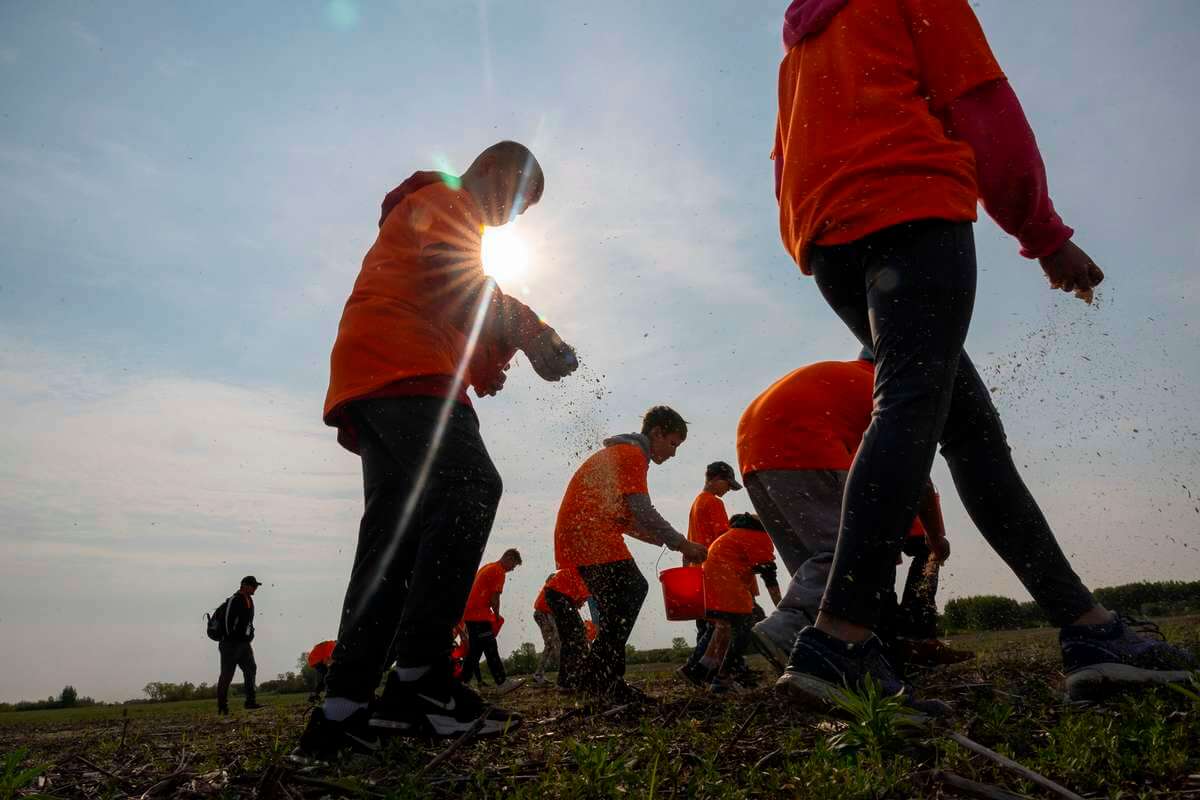
Fifth grade students plant pollinator habitat during an event held by the Meeker county chapter in 2024. (Photo by Dave Schwarz)
Impact
At the end of the day, public lands are about more than birds and bird hunters.
It turns out that Pheasant Run One is located near Lake Bella and the shallow-water aquifer that feeds wells for the 13,000 residents of Worthington.
Rising nitrate levels from fertilizer runoff were threatening the city’s water supply. Around the time Pheasant Run One was founded, the city and partner agencies began to join forces to reverse the trend. Grasslands in the wellhead areas have since been expanded and protected, including the 147-acre Worthington Wells tract dedicated by the Nobles County Pheasants Forever chapter in 2014.
Today nitrate levels in Worthington’s drinking water are falling. The project has won several awards and is a model for wellhead protection nationwide.
Public lands can also inspire.
Most professionals in the conservation field will tell you they developed their drive for the work from time spent outdoors in their youth, often on public lands.
“A few years back a mom sent me a photo of her son and his first rooster, taken on a piece of land we had acquired. She was able to be with him for that experience and just wanted to say a heartfelt ‘thank you.’” Sandquist said.
“Who knows what impression that made on that kid, how it determined the direction of his life. We talk a lot about acres. But those intangible things - that’s where the meaning of these places really is.”
- By Dave Schwarz, Minnesota Outreach Coordinator

